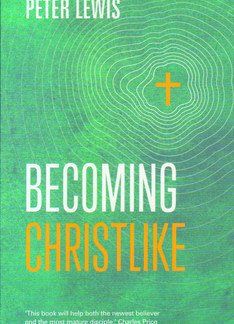Peter Lewis was commissioned by the Keswick movement to write this. It forms part of the Keswick Foundations series. It is partly based on a comment by John Stott at his last attendance at the Keswick Convention: ‘Christlikeness is the will of God for the people of God’.
The book’s recommendations are from well-known names like Terry Virgo (Newfrontiers), Becky Manley Pippert and John Stevens (FIEC).
Readers are pointed to Scripture, through numerous references and a reasonable number of quotations. References are taken from five different Bible translations, the majority from the NIV (2011 edition). The writing style is modern and flows well. The illustrations, on the whole, are helpful, though a little sensational and frequent.
In the book’s five sections, the author helpfully begins to explore the source, model, helps, contradictions and triumph of Christlikeness.
If anything, his coverage of the work of the Holy Spirit could have been more thorough; it is largely limited to a simple run-through of Galatians 5 (‘the fruit of the Spirit’). However, he acknowledges in the preface that the book is an introduction to the topic of holiness; it should not be viewed as comprehensive.
The fourth section looks at contradictions (obstacles) to Christlikeness. It is brief but up-to-date, offering practical points. Fittingly, the book finishes with reflections on eternity, reminding us that we should be longing to be with the One we are to be like.
This is essentially another title addressing holiness. The author aims to view holiness through the lens of becoming more like our Lord and Saviour, holding up the character of Christ for us to admire and glory in. This sets a high standard for us to follow, from our everyday activities to our overarching worldview. We are reminded to pursue holiness not in order to be saved, but that we are saved in order to pursue holiness.
Overall, a challenging and encouraging read, which considers what it means to become like Christ. Any reader would find clear teaching and points for further thought.
James Chittenden
Redhill






